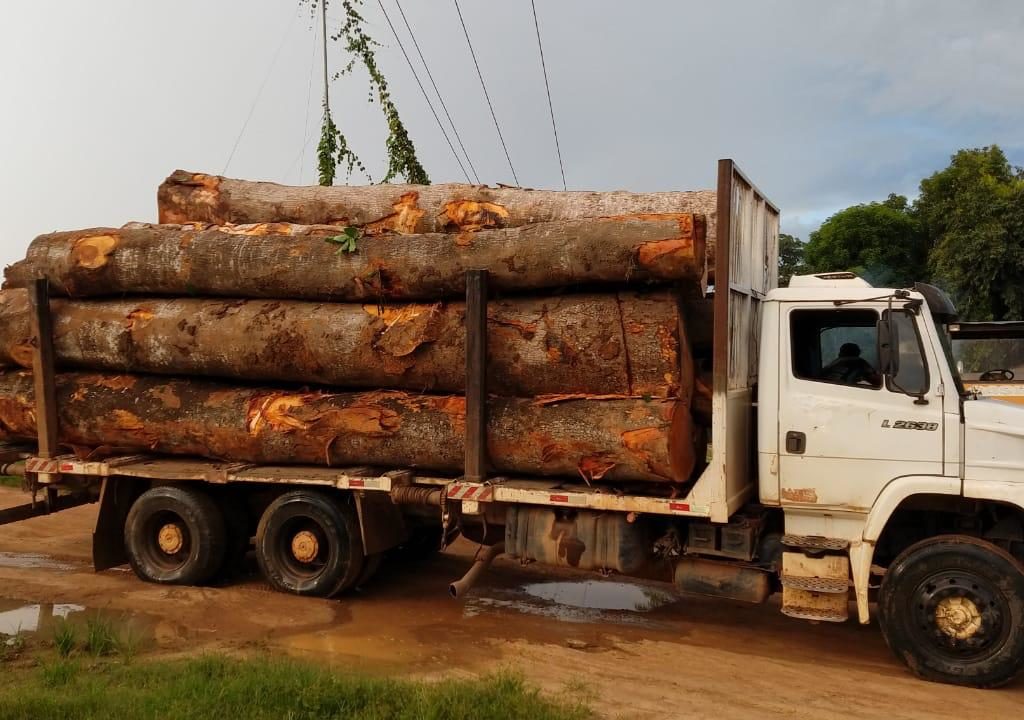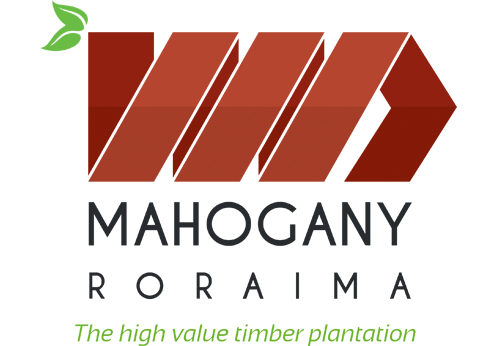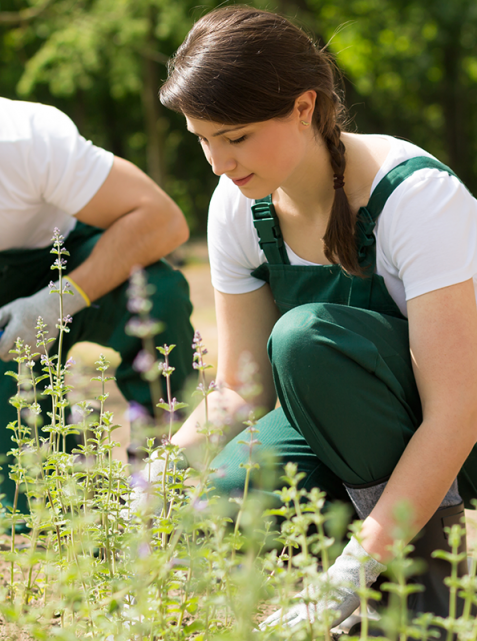
About Us
Mahogany Roraima
Mahogany Roraima is planting the world’s largest African Mahogany sustainable forest, it will be 20,000ha in 10 years.
Contact us to check the availability of forestry replacement credits and price. Enter the data of the legal representative
MiSSION
Plant forests and reforest, with environmental responsibility, in a sustainable way, preserving the environment and generating wealth through technological innovation.
VISION
To be the largest afforestation and reforestation company in the world, creating the first forest planting technology franchise, minimizing the impact of deforestation.
VALUES
Resilience, Transparency, Commitment, Respect for people, Respect for the environment, Creativity, Commitment to quality and Focus on quality.
More About Mahogany Roraima
Mahogany Roraima is planting a sustainable African Mahogany Forest with native trees in the world in Roraima plowed. Over the next 10 years we will plant 20,000ha of African Mahogany (50% of the area) and native trees of the Roraima state plowed (50% remaining), Brazil (Legal Amazon) and only African Mahogany trees will be cut, the native trees will be left intact.
In parallel to the sustainable planting of African Mahogany, we will be involved as part of the iPlantForest consortium in a sustainable project to restore deforested areas with native trees in a total area of approximately 10,000ha in the state of Roraima. In this project half of the trees will never be cut and the other half of the trees will be tropical trees of high economic value for cutting and marketing.
The species used in the above projects in the state of Roraima will be at least as described below and may use more native species from the Amazon biome besides these:
Brazilian Mahogany; Plowed Angico; Jatoba; Jenipapo; Native Tapereba; Murici; Queenwood; Yellow Ipe; White Ipe; Purple Ipe; Cumaru; Cupiuba; Copaiba; Kapok; Stone Angelim; Red Angelim; Angelim-Ferro; Purple; Andiroba; White Avocado; Sucupira; Macaranduba; Cedar; White Cedar; White Fig Tree; Oiti; Piquiá; Visgueiro; Garapa; Paineira; Sow Mamica; Paricá; Parapará; Embaúba; Pigeon Wood, among others.
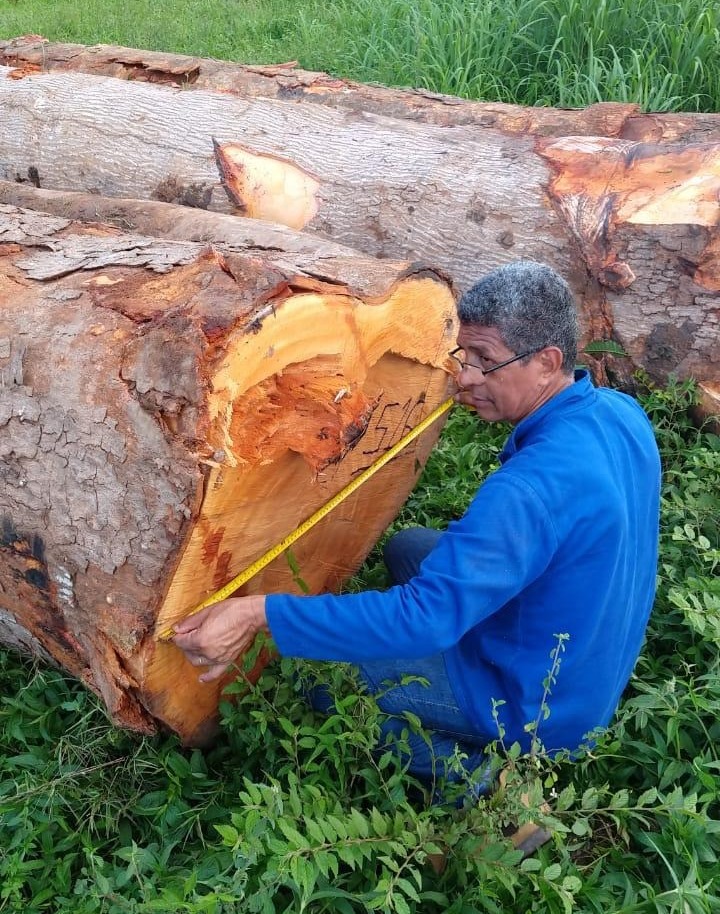
African Mahogany cut in Roraima (2019). 1.84m3 average of timber per tree.
Why Roraima? Lower land price per hectare in Brazil. Better soil and climatic conditions for the cultivation of African mahogany. Roraima is located in the same latitude as mahogany is born naturally in Africa. Roraima has the Monsoons climate, that is, it rains a lot in May, June and July and then it hardly rains in the regions where we are currently planting. African Mahogany prefers to live in this climate. It grows on average from 1m to 3m a year and the rest of the year heals, hardens the wood, and gets its peculiar red-orange coloration.
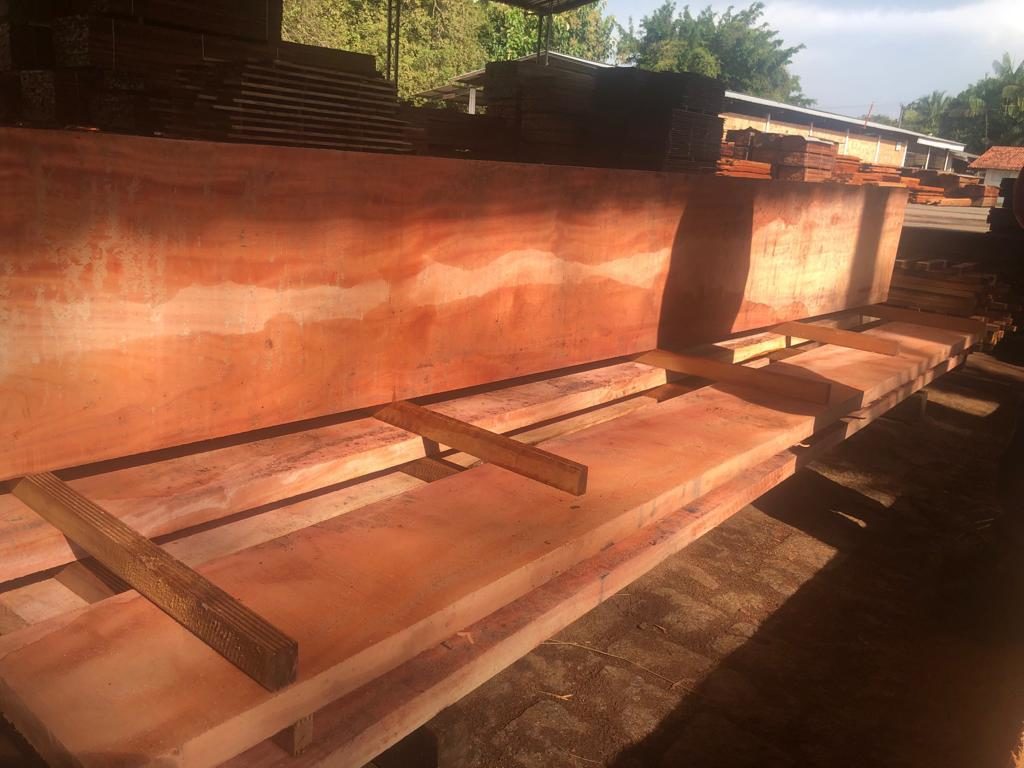
Roraima is also located 600km from Georgetown Harbor where we can export the timber. Georgetown is 4 days sailing from the Panama Canal. That is, it will be the closest port to the Panama Canal of “Brazil”.
There will be 11 million trees in 10 years, 555 per hectare.
Selection cuts will be made in year 8, 10 and in year 12 we will start selling timber.
We will arrive in year 18 with 140 trees per hectare, that is, approximately 2,8 million cubic meters of timber.
Currently the company has Agricultural Partnership contracts for the planting of 12,000ha.
The company’s current Biological Asset is US$ 90 million.
The company has all the necessary equipment to plant 10,000 ha per year or more.
Three research teams from UFRR are assisting the company in research in the nursery, field, and soil.
The first: Team led by Dr Frutuoso PhD in Solanos de Savana, to study all the soils of the fields where we will plant and monitor the development of the soil, as we enter consortiums to make the forests self-sufficient in 3 years.
The second. Team led by Dr Beethoven specialist in Forestry. Research the best management conditions in the nursery and on the plots (forests). It will also conduct cloning research. He is currently studying the best consortia with other trees and crops with lower extraction cycle.
The third. Team led by Dras. Patricia and Deyse, researches the development of roots in the field and in other African mahogany plantations in the state of Roraima.
Investment valued at US$ 53 million for planting in 10 years.
Currently two master’s theses and one doctoral thesis are underway using our research project.
We have created an unprecedented method to break dormancy of the seeds, which has guaranteed us a germination of 95%.
The team of Dr. Beethoven is all concentrated in the nursery and planted fields, evaluating the protocols of planting of seeds, germination, and hardening, besides the studies and monitoring of the health of the seedlings in the nursery and of the forests. Periodically we collect the indicators of both the seedlings and the trees in the forests to determine the best management to produce well-rusted seedlings for this region and the best practices for the production of wood in the cycle determined by the company.
The team of Dr. Frutuoso is responsible for the study and analysis of the soils, evaluating the physical-chemical conditions of the same, besides the fertility and aptitude. In this way, we can better select where the mahogany forests of the genus Khaya Ivorensis and Khaya Senegalensis will be installed to obtain the best results in the production of wood. Among the studies carried out, we are comparing the local soil conditions in Roraima with the soils where the African mahogany naturally develops.
The teams of doctoral students Patricia and Deyse are working in the field, evaluating the growth of the trees and their roots, studying profiles in all the fields planted by the company. Their teams will also evaluate the behaviour of African mahogany planted in other regions of our state, to create parameters for comparison between the development of forests in the different soils of Roraima and with different management conditions. Among other things, we are comparing how the African mahogany responds to irrigation and accurately determining its real need.
